Fort St. Louis and the Rum Battle
Approaching Fort-de-France, the capital of Martinique, by ferry, the most prominent feature of the harbor is the imposing collection of walls and buildings that make up Fort St. Louis, a 17th century naval base.
(Zie Nederlands versie beneden.)
Fort St. Louis is still a French naval base today; Martinique is still an overseas territory of France. Nevertheless, parts of the fort are accessible for a tour, so I went along on my first day in Martinique. I love learning about history, and ancient walls like these just seem to call to me. It was all I could look at as the ferry pulled into the harbor.
The tour showed us only a very small portion of the fort: the fortifications and some wonderful views. But the guide’s storytelling was worth the visit.
The fort was originally built by the French in the 17th century to defend against the British and the Dutch in their ongoing conflicts over colonial territories. French colonial plantation owners and merchants supported the building effort by lending their slaves to do the work.
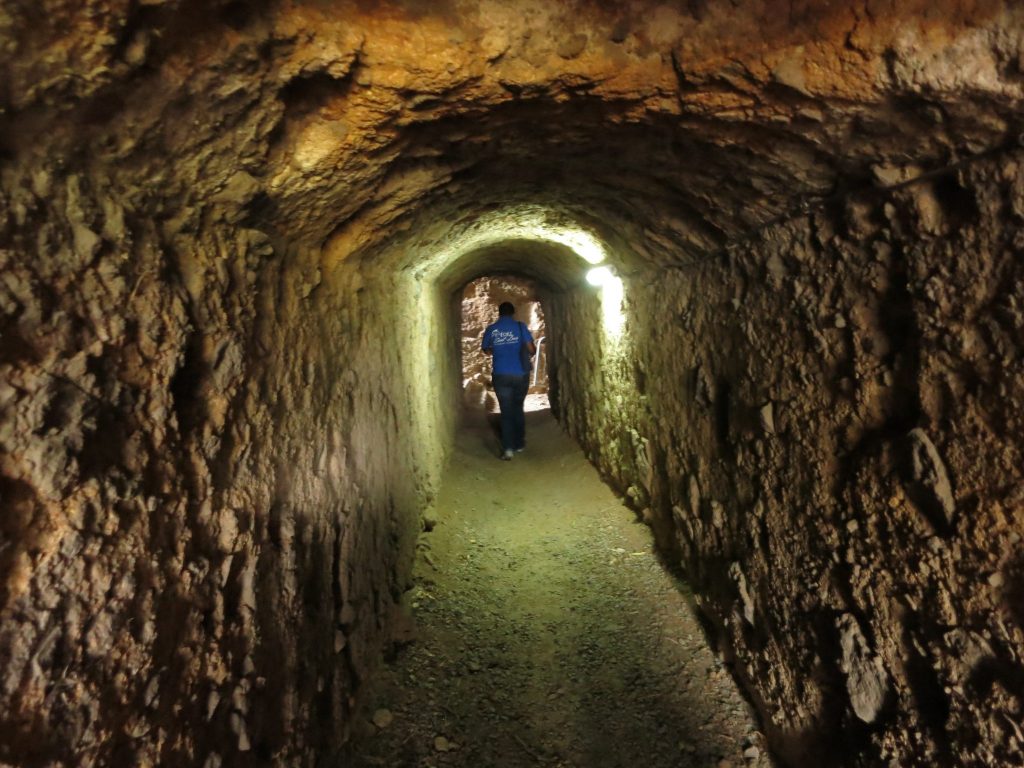
The current inhabitants, besides the sailors based there, are green iguanas. Not native to the island, they escaped or were released after a short-lived scheme to set up a zoo in the fort in the 20th century.
The Rum Battle at Fort St. Louis
The best story the guide told us had to do with a battle in the Third Anglo-Dutch War in 1674. At the time, France was allied with Britain.
A flotilla of Dutch ships commanded by Admiral de Ruyter, with a “fleet of eighteen warships, nine storeships, and fifteen troop transports bearing 3,400 soldiers” (taken from Wikipedia, the font of all knowledge), attacked the Fort. The French, meanwhile, only had about ten ships, many of them merchant rather than battleships, and only 161 men to defend the Fort itself.
The battle—which became a sort of siege—went on for three days. When the Dutch first arrived, the French soldiers milled around in a way that fooled the Dutch into thinking they had far more men than they had. The battle took place both on land and sea.
Despite French success in defending Fort St. Louis, Governor Sainte-Marthe, leading the French effort, decided that they were too outnumbered to prevail and prepared to withdraw his forces and surrender the fort.
The Dutch soldiers, meanwhile, pillaging some warehouses to resupply their ships, found a supply of liquor and helped themselves. Several hours later, when they were ordered to attack, they were drunk and confused and over a thousand were killed. De Ruyter ordered a retreat.
The French, expecting a direct attack on Fort St. Louis that afternoon, were readying themselves to leave, but were instead surprised to see the Dutch fleet leaving. They had won – or rather the Dutch had lost – what became known as “The Rum Battle.”
Whether this story is true or not, I don’t know. I found it in the French version of Wikipedia but not the English or Dutch versions. In any case, I like it.
You might also enjoy this story about both Martinique and Guadeloupe: 4 Snorkeling Trip Surprises. Or this one from my flight from Martinique to Barbados: A special encounter on a puddle-jumper. Or this one from Guadeloupe: The paradise in “Death in Paradise”.
Besides the Rum Battle story, I was glad I took the tour on my first day in Martinique for the general background it gave. The other visitors with me on the tour, some of them traveling on a cruise ship moored in the harbor that day, were friendly and in a jolly mood and not afraid to ask questions, so I learned a lot about all sorts of Martinique-related information. I heard the outlines of Martinique’s history, and the guide pointed out many landmarks from up there as well as answering questions about life on Martinique.
The views were magnificent as well. There’s no guarantee, if you took the tour, that it would be as free-ranging as ours was, but I’d recommend it just for the views and for the general orientation to Martinique that you’ll gain.
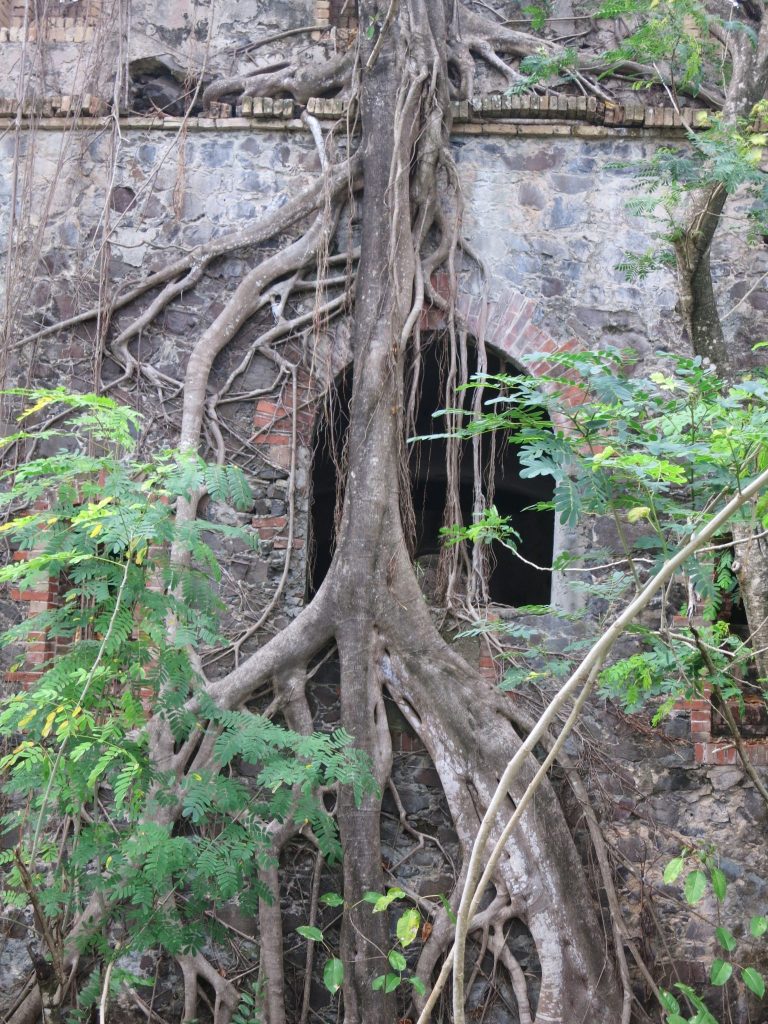
Visiting Fort St. Louis
Fort St. Louis is open all year, Tuesday to Sunday, 9:00-12:00 and 14:00-16:00.
Buy your ticket at the tourist information kiosk at La Savane, which is the big public square below the fort. Tickets are €8. Tours of Fort St. Louis are offered hourly, but only one each day is in English. Ask at the kiosk when you buy your ticket. Also be aware that, since Fort St. Louis is still an active military installation, you will not be allowed to take pictures in some parts of the fort.
If you are looking for a place to stay in Fort-de-France, use this link for accommodations.
If you enjoyed this article, please share it on social media! The images below are formatted for Pinterest.
Fort St. Louis en Het Rum Gevecht
We meerden aan met de veerboot bij Fort-de-France, de hoofdstad van Martinique. We zagen gelijk het meest opvallende kenmerk van de haven; de imposante collectie van muren en gebouwen die Fort St. Louis een 17e eeuws marinebasis maakt.
Fort St. Louis is nog steeds een Franse marinebasis; Martinique is nog steeds een Frans overzees departement. Ik nam deel aan een rondleiding op mijn eerste dag in Martinique. Deze werd gegeven in een deel van het fort. Ik hou van de geschiedenis en de oude muren leken mij naar zich toe te lokken. Toen de veerboot de haven naderde waren mijn ogen gekluisterd aan deze oude muren.
De rondleiding liet ons slechts een zeer klein deel van het fort zien nl. de vestigingswerken en een aantal prachtige uitzichten. Maar verhalen die de gids vertelde maakten het bezoek de moeite waard.
Het fort werd oorspronkelijk gebouwd door de Fransen om het eiland te verdedigen tegen de Britten en de Nederlanders in hun voortdurende conflicten over koloniale gebieden. Franse koloniale plantage-eigenaren en handelaren ondersteunden de bouw door het lenen van hun slaven om het werk te doen.
De huidige bewoners, naast de matrozen die er gevestigd zijn, zijn groene leguanen. Deze zijn niet inheems aan het eiland, ze ontsnapten of werden vrijgelaten na een kortstondig plan voor het opzetten van een dierentuin in het fort in de 20e eeuw.
Het Rum Gevecht bij Fort St. Louis
Het beste verhaal die de gids ons vertelde had te maken met een gevecht in de Derde Engels-Nederlandse Oorlog in 1674. Op dat moment werd Frankrijk door Groot-Brittannië geallieerd.
Een vloot van Nederlandse schepen, onder leiding van Admiraal de Ruyter, bestaand uit achttien oorlogsschepen, negen voorraadschepen en vijftien transportschepen met 3.400 soldaten (uit Wikipedia, de bron van alle kennis), viel het fort aan. De Fransen hadden ondertussen slechts 10 schepen, veelal handelsschepen ipv oorlogsschepen en slechts 161 mannen om het fort zelf te verdedigen
Het gevecht—die een soort belegering werd—duurde drie dagen. Toen de Nederlanders eerst aanmeerden, gingen de Franse soldaten zich bewegen in het fort op een manier die de Nederlanders misleidde zodat ze zouden denken dat de Fransen veel meer mannen hadden dan ze echt hadden. De strijd vond plaats zowel op land als op zee.
Ondanks het Franse succes in het verdedigen van Fort St. Louis, besloot Gouverneur Sainte-Marthe, leider van de Franse inspanning, dat ze veel te weinig mensen hadden om de overwinning te behalen en gaf het bevel om zich voor te bereiden om terug te trekken uit het fort.
Ondertussen plunderden de Nederlandse soldaten enige pakhuizen in de haven om hun schepen te bevoorraden. Ze vonden een voorraad sterke drank. Enkele uren later, toen ze werden bevolen om aan te vallen, waren ze dronken en niet meer in staat te vechten. Hierdoor werden meer dan duizend soldaten gedood en gaf De Ruyter het bevel om terug te trekken.
De Fransen, die een directe aanval verwachtten op Fort St. Louis diezelfde middag, waren klaar om te vertrekken maar in plaats daarvan waren ze verrast te zien dat de Nederlandse vloot vertrok. Hierdoor hadden zij de overwinning op, wat nu bekend staat als, “Het Rum Gevecht.”
Of dit verhaal waar is of niet weet ik niet. Ik vond het in de Franse versie van Wikipedia, maar niet in de Engelse of Nederlandse versie. Ik vind in ieder geval deze versie leuk.
Naast het verhaal van het Rum Gevecht, was ik blij dat ik de rondleiding deed op mijn eerste dag in Martinique vanwege de algemene achtergrond die ik hier mee kreeg. De andere deelnemers op de rondleiding, een aantal van een cruiseschip die die dag in de haven aangemeerd was, waren vriendelijk en in een vrolijke stemming. Zij waren niet bang om vragen te stellen en daardoor heb ik veel geleerd over allerlei Martinique-gerelateerde informatie. Ik hoorde in grote lijnen de geschiedenis van Martinique en de gids heeft vele bezienswaardigheden aangewezen. Ook beantwoordde zij veel vragen over het leven op Martinique.
Het uitzicht was ook prachtig. Er is geen garantie dat als je de rondleiding doet deze zo veelomvattend als de onze zou zijn. Ik raad het wel aan al is het alleen maar voor het uitzicht en de algemene oriëntatie op Martinique die je zult krijgen.


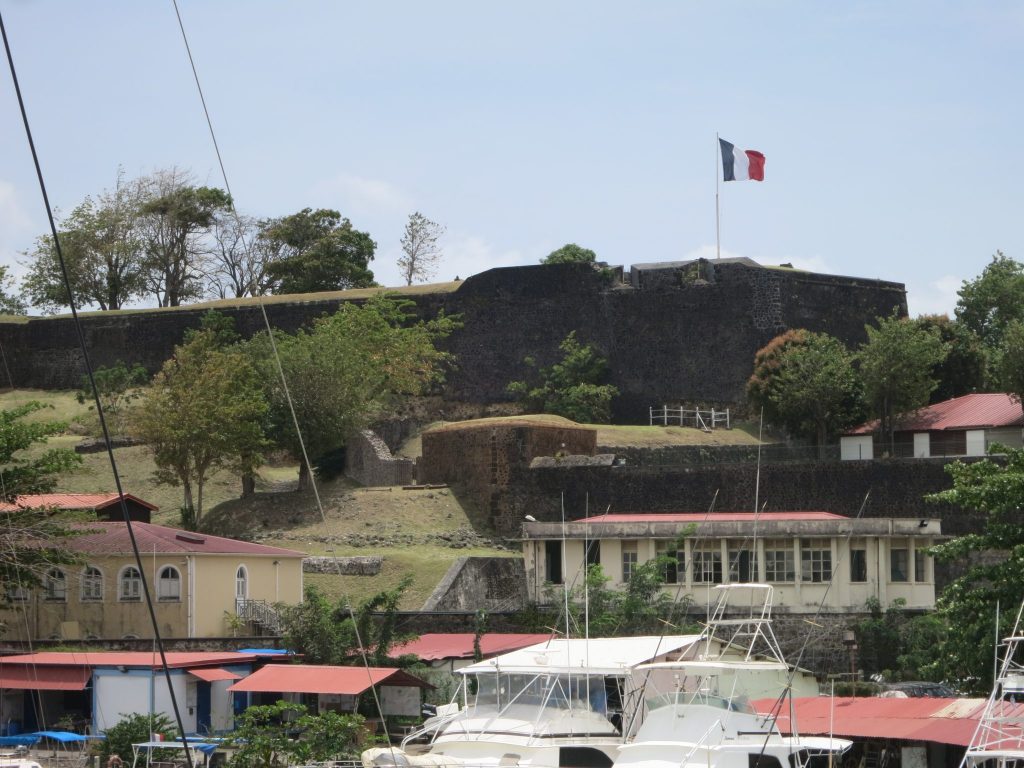
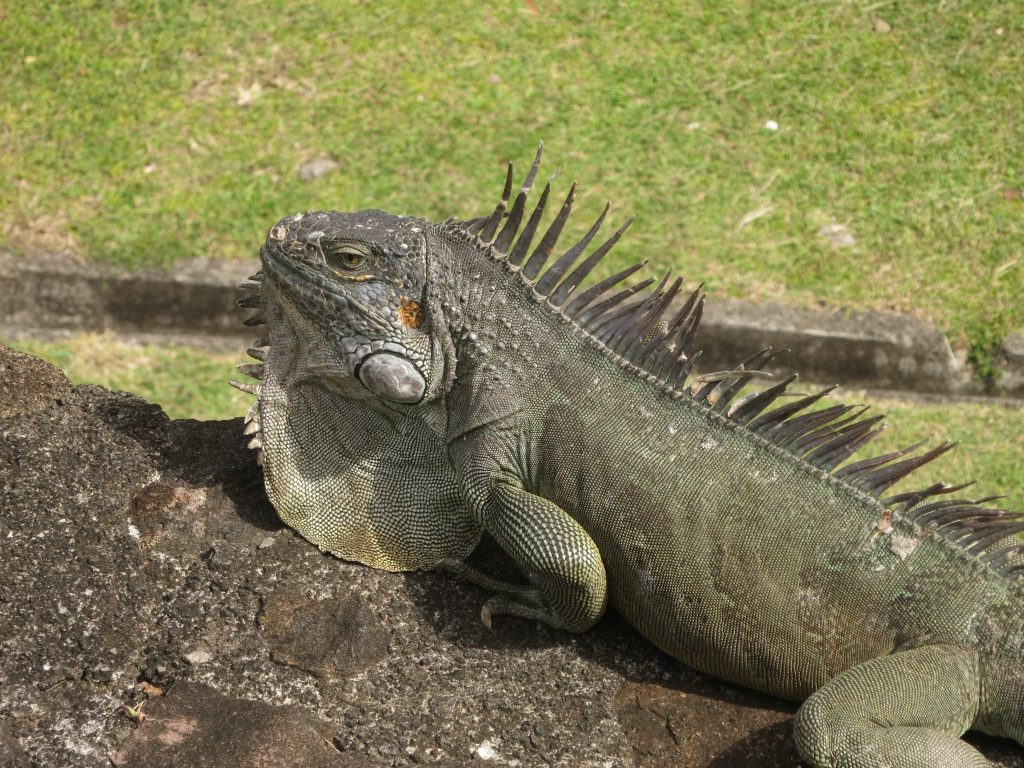
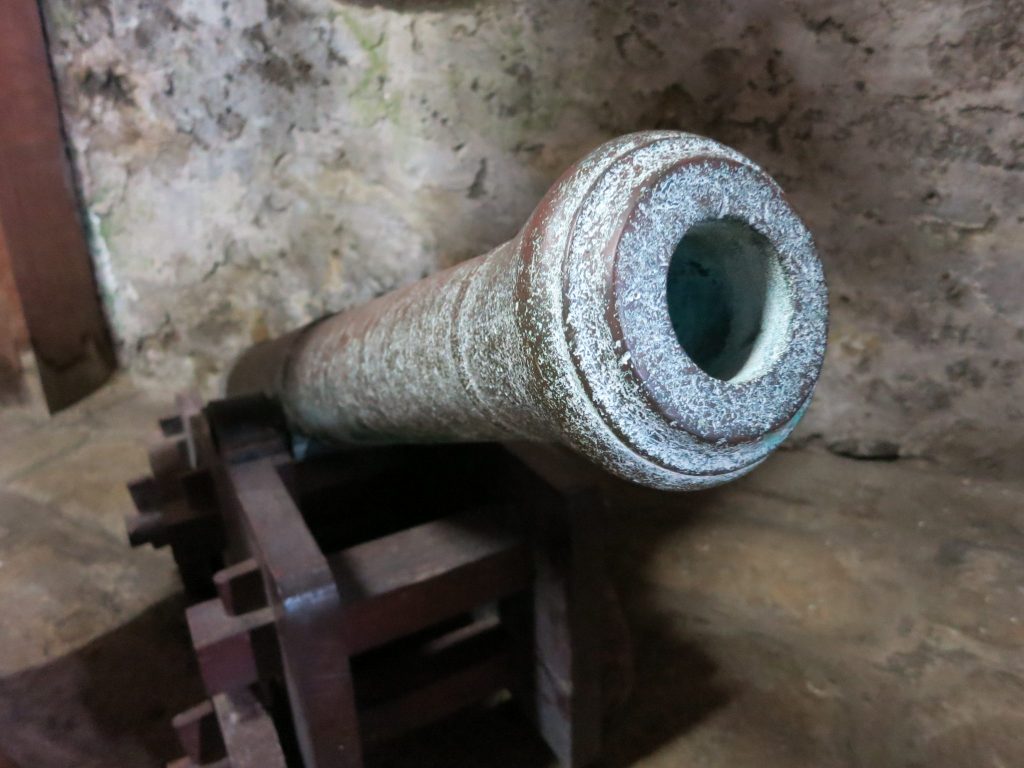
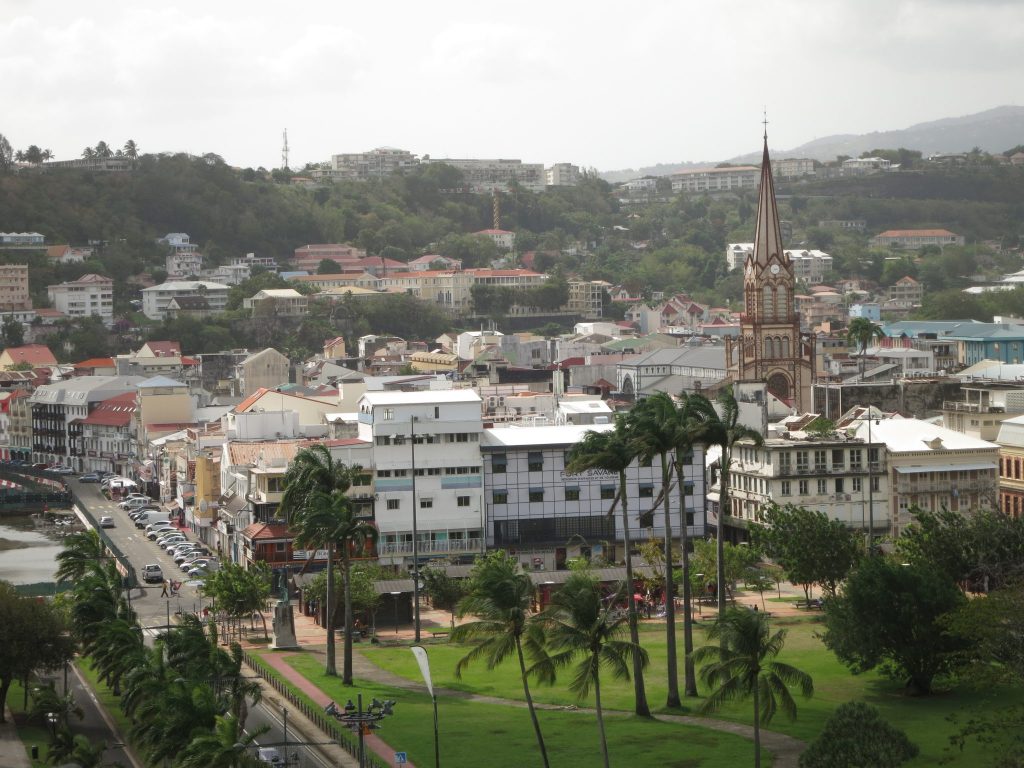
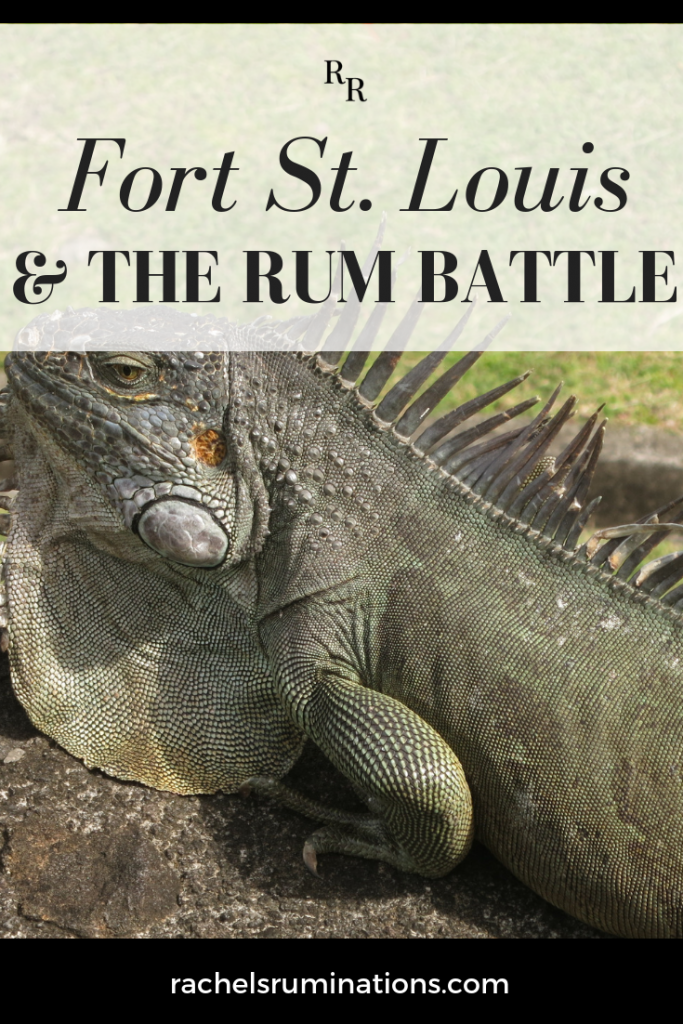


Highly suspicious that the French version with the Dutch being too drunk to fight is on Wiki! LOL.
*Channeling my students*: ‘But it’s true! I read it online!’ Lol!
Hi Rachel,
Some things never change. Everybody’s version lifts themselves up with pumped-up goodness!
So is the Rum Battle true?
I don’t care. It’s a great story and it helps me remember history.
Thanks!
Josie
My thoughts exactly! The victors write the history, which is usually a bad thing, but I don’t care, in this case! Or maybe it’s a true story and the losers just choose to deny it.